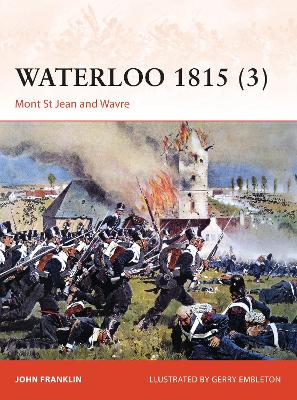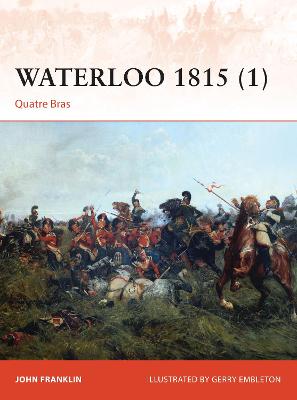Campaign
1 primary work • 3 total works
Book 280
Waterloo is one of the defining campaigns of European history. The name conjures up images of the terrible scale and grandeur of the Napoleonic Wars and the incredible combined effort that finally ended Napoleon's aspirations of power in Europe. Drawn from unpublished first-hand accounts, and using detailed illustrations, this comprehensive volume is the ideal resource for studying the intense fighting at the battles of Waterloo and Wavre, the final, decisive engagements of the Waterloo campaign. Those two battles are at the heart of this study, which explores the action at Mont St Jean where Wellington managed to hold the French at bay until the arrival of the Prussians under Blucher saw the Allies secure a hard-fought victory at the dramatic climax of the 'Hundred days'.
This title represents the second instalment of the captivating study of the Waterloo campaign, one of the defining events in European history. In particular it focuses on the desperate struggle for Ligny, which saw the Prussians pushed back by the French Army after heavy fighting in what was to be Napoleon’s last battlefield victory. With Wellington unable to assist his Prussian allies in time, the Prussian centre was overwhelmed as night began to fall, although the flanks were able to retreat in some semblance of order. Stunning illustrations augment the drama of the fighting in this area while considerable new research drawn from unpublished first-hand accounts provide a detailed and engaging resource for all aspects of the battle.
To commemorate the 2015 bicentenary of the Battle of Waterloo, one of the defining campaigns in European History, Osprey is replacing its single volume Campaign title covering the whole of the battle with three highly detailed volumes. Based on new research drawn from unpublished first-hand accounts these volumes will provide a comprehensive resource for every aspect of the battle. The first of this trilogy details the battle of Quatre Bras where an initial 8,000 Allied troops faced 48,000 men of the French Armée du Nord under Marshal Ney. Realising his error, Wellington concentrated his troops at the strategic crossroads of Quatre Bras where they just managed to hold off Ney’s attacks. The battle ended in a tactical stalemate but, unable to link up with Blücher’s Prussians, Wellington retreated back along the road to Brussels to new positions at Waterloo. Featuring extensive photographs, full colour artworks, maps and bird’s-eye-views, this first instalment is not to be missed.


